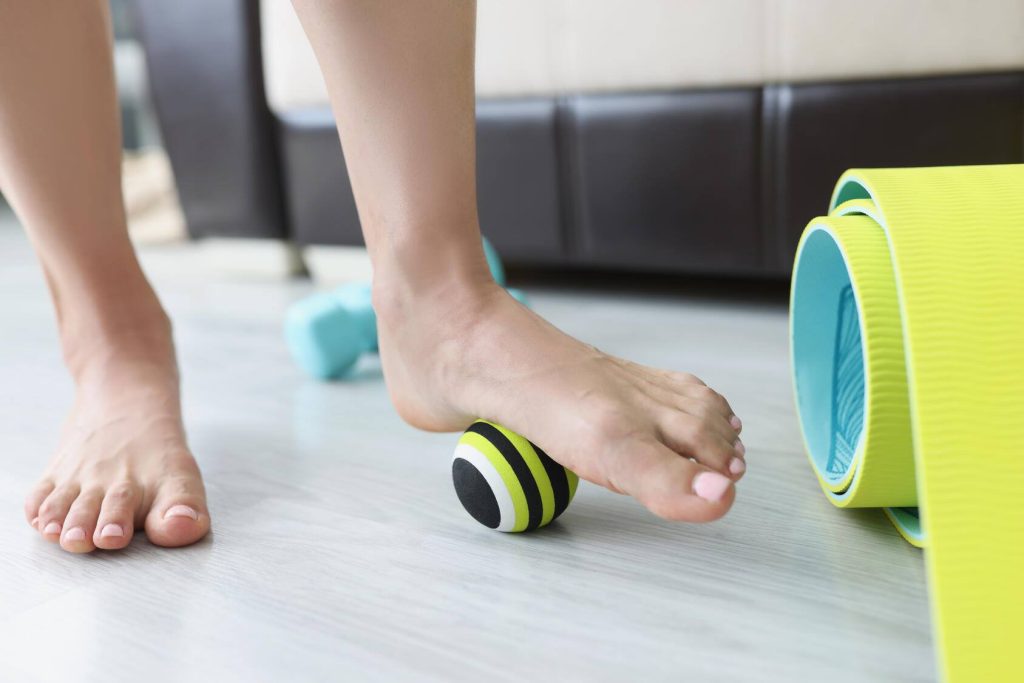-
Mayo Clinic Q and A: Heel pain? It might be plantar fasciitis

DEAR MAYO CLINIC: When I wake up in the morning and go to stand up, I have such excruciating pain in my heel that I have to sit back down on the edge of the bed. As the day goes on, it gets somewhat better, but my heel is still tender. What can be causing the pain?
ANSWER: "My heel is killing me!" is, without a doubt, one of the most common sentences uttered in podiatry offices worldwide. Heel pain can range from slightly uncomfortable to utterly debilitating. Most often it's caused by plantar fasciitis.
The plantar fascia is a band of tissue extending from the heel to the ball of the foot. It supports the arch of the foot and absorbs shock when walking. Although the cause of plantar fasciitis isn't well understood, typically the plantar fascia has been put under tension and stress, which can cause small tears. Repeated stretching and tearing brings on irritation, inflammation and, typically, heel pain.
Plantar fasciitis can affect anyone. However, it's most common in middle-aged adults, as well as people who take part in activities such as running, ballet and aerobic dance. Obesity also can cause this condition because extra pounds put more stress on the fascia. Other risk factors include high arches, flat feet, and occupations that require walking or standing all day on hard surfaces.
The primary sign of plantar fasciitis is excruciating heel pain when you take your first steps in the morning. It's not unusual for the pain to subside as you walk around, but it may return after you've been sitting for a while. Standing for a long time also can make it flare up.
Treatment for plantar fasciitis
The good news about plantar fasciitis is that it's highly treatable. Early detection makes the condition more manageable and prevents further complications. If left untreated, plantar fasciitis can take a toll on your enjoyment of everyday activities and make you more sedentary. The pain may cause you to change the way you walk, which in turn can lead to various problems such as knee, hip and back pain.
If you suspect you have plantar fasciitis, consult with your health care team. Although X-rays or MRIs usually aren't required, imaging may be requested to rule out a stress fracture. Nonsurgical treatment often has satisfactory results, although it may take several months to get back to normal.
Treatment typically includes:
- Rest
Pain is the body’s way of warning you that something is wrong. Listen to your body and avoid activities that make the pain worse, such as running, hiking or dancing. So that you can keep moving while your heel improves, try bicycling, swimming, water fitness, elliptical training, strength training, yoga, and other low- or no-impact workouts.
- Stretching
Your podiatrist or physical therapist will give you a list of stretches that reduce tension on the plantar fascia and help with healing. Tight calf muscles often play a role in heel pain. In addition to stretching, a health care professional also may show you how to apply athletic tape to support the bottom of your foot.
- Ice
Ice therapy is a wonderful way to decrease inflammation and manage pain. Place ice on the heel for 20 minutes, three to four times a day. You also can fill a bottle with water and freeze it, then gently roll it under your heel and arch.
- Medication
Pain relievers, such as ibuprofen and naproxen, can help decrease inflammation and speed up healing.
- Night splint
These sock-like wraps with built-in supports help stretch the plantar fascia and Achilles tendon while you're sleeping or resting. A splint can help alleviate pain experienced with those first few steps in the morning.
- Orthotics and shoes
Adequate arch support is essential when treating plantar fasciitis. Discuss with your podiatrist whether over-the-counter or custom orthotic inserts are right for you. In addition, avoid going barefoot and choose supportive, firm-soled shoes with good heel cushion and arch support, such as running shoes.
Surgical treatment isn't recommended often and is reserved for those not responding to conservative treatment. To prevent recurrence of plantar fasciitis, stretch properly before exercising and wear supportive shoes if you'll be on your feet for a long time. — Dr. Stephanie Kvas, Podiatric Medicine, Mayo Clinic Health System, Waseca and New Prague, Minnesota







